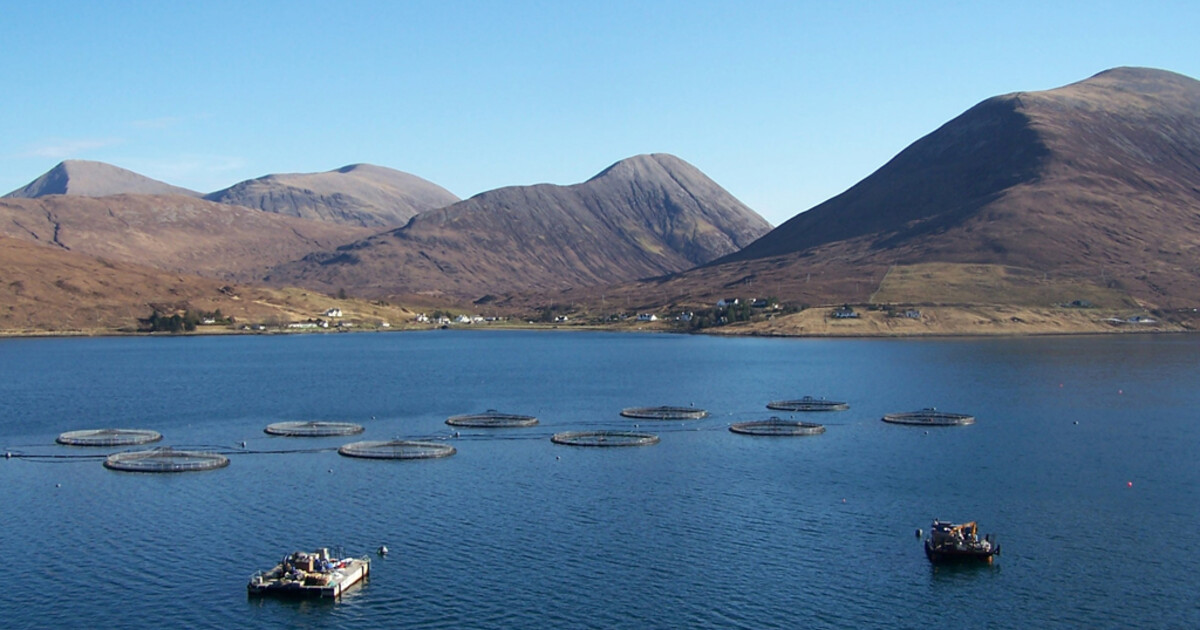It's time to dismantle the Crown Estate & transfer land & property to democratic control

Forty years ago, the first fish farms appeared in Scotland’s west coast sea lochs. No planning consent was required and as they spread, local politicians and campaigners became aware of the unaccountable and remote body that is the Crown Estate Commissioners. Since 1961, they have been responsible for managing Scotland’s Crown Estate and as their tentacles spread, they began demanding rents and levies from harbours and moorings that had previously invested in coastal facilities not ever imagining that they needed to pay rent for the privilege.
For the best part of 40 years, there has been an active campaign to eliminate the malign influence of the Crown Estate Commissioners by the West Highland Free Press and politicians such as Brian Wilson and Michael Foxley.
Scotland’s Crown Estate derives from two sources. The first is ancient rights that belong (or were asserted to belong) to the Crown by default - gold and silver, the foreshore, mussels and oysters, salmon and the seabed. The second are conventional and more modern acquisitions of ordinary property - offices, farms and retail premises.
Historically this first set of rights had always been administered in Scotland until the 1830s when control went south to London. Other Crown rights such as ownerless property and treasure trove remain administered to this day by the Crown Office with revenues paid to the Scottish Consolidated Fund.
For most of their history, they have been administered here in Scotland and the revenue has flowed to the Scottish Exchequer. They never, for example, formed part of the civil list when England’s crown revenues were surrendered in 1760. In other words, this is a distinctive, historic set of rights that belong to Scotland.
It is thus welcome that, at long last the management of the Crown Estate has been devolved to the Scottish Parliament following the recommendations of the Smith Commission. Despite UK Government guarantees that Smith would be implemented in full, however, legislative competence for the revenues of the Crown Estate has not been devolved. Furthermore, the devolution settlement contains constraints to how freely Parliament can exercise its new powers.
Such constraints are evident in the Scottish Crown Estate Bill which is currently making its way through Parliament. At the beginning of the Stage One debate in December, the Justice Secretary, Michael Matheson, declared: “For the purposes of rule 9.11 of the standing orders, I advise Parliament that Her Majesty, having been informed of the purport of the Scottish Crown Estate Bill, has consented to place her prerogative and interests, in so far as they are affected by the bill, at the disposal of the Parliament for the purposes of the bill.”
That the Scottish Parliament must defer to Her Majesty in order to legislate is a symbol of the arcane nature of our democracy.
But evident too in the Bill and in the minds of too many politicians is the idea that the Crown Estate is some sort of coherent suite of assets which by law must be maintained as an estate in land on behalf of the Crown. I reject this assumption.
The Crown Estate is both a feudal relic and the last gasp of Empire. It includes gold and silver, rights to which date back to the oldest Scottish Act on the statute book, the Royal Mines Act of 1424. It includes the foreshore and the seabed, rights to both of which have no statutory basis. In relation to the foreshore, the Crown’s rights are, in the words of the Scottish Law Commission, merely the “predominant modern theory.” As for Rockall, it was claimed by the Crown in 1955 in Britain’s last formal exercise of colonial power with possession being taken in the name of her majesty by Captain O’Connell of HMS Vidal who was given a royal warrant to seize the rock.
Crucially, Scotland now has the power to sweep away these anachronisms and in so doing free ourselves from the shackles of the 2016 devolution settlement. Put simply, the complex arrangements for managing Scotland’s Crown Estate proposed in the Bill can be done away with if we abolish the Crown rights themselves (under powers that have existed since 1999) and transfer them to other public bodies. So, for example, the repeal of the Royal Mines Act 1424 would allow ownership of gold and silver to be transferred to Scottish Ministers. Similar arrangements could be made for the seabed. The Crown’s ownership of the foreshore could be abolished and transferred to Scotland’s local authorities.
Far from seeking to preserve the Crown Estate as some inalienable entity, we should be seeking to dismantle it, transfer the rights to more appropriate owners, wind up the body (Crown Estate Scotland) being established to manage it, and democratise a significant range of land and property that is of vital importance to communities across Scotland.
